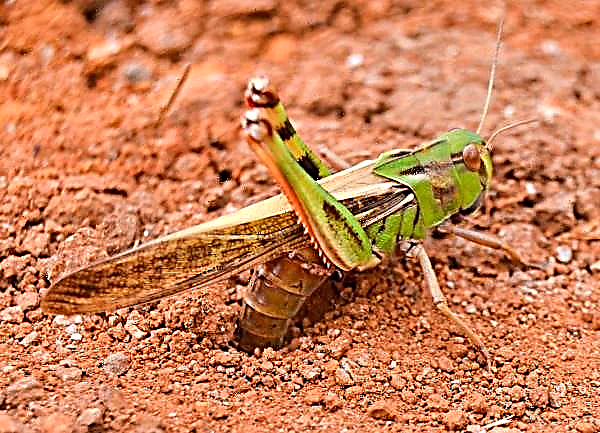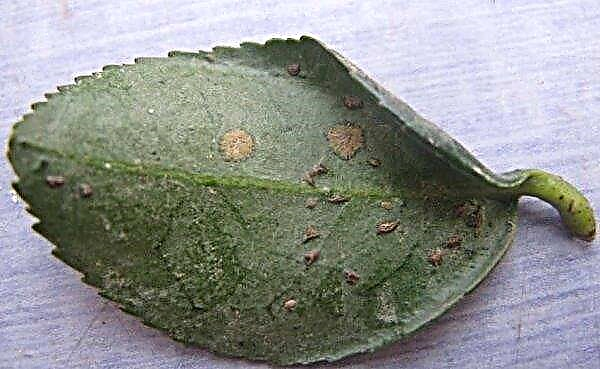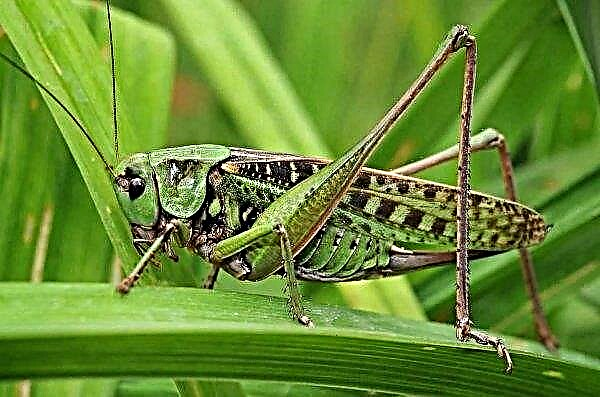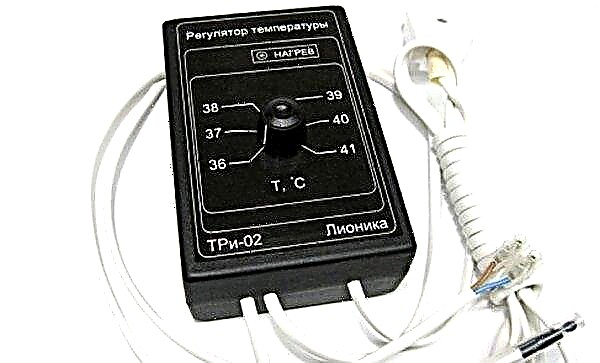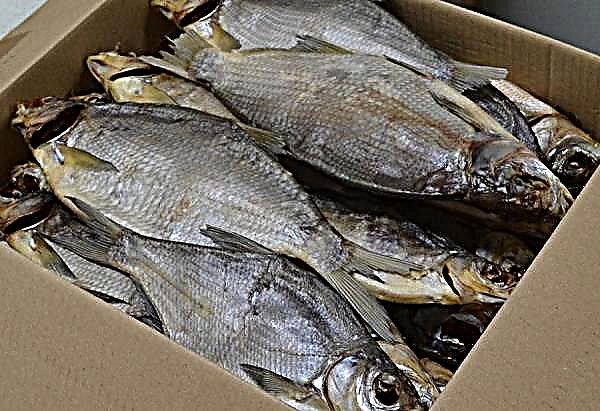Often in the gardens of warm regions you can find a short bush of dark green color, dotted with small five-leafed flowers of white and various shades of pink. This is catharanthus. It is grown both in gardens and in pots at home. The flower is easy to grow from seeds, and how to do it better is described in the article.
Botanical plant descriptions
It is believed that the catarhus comes from Madagascar, as it is found here most often, but it grows throughout the tropical zone. Under natural conditions it can grow up to 150 cm; indoor specimens grow to 50-60 cm. The root system is powerful, core, with many lateral branches.
Stems erect, branching at the top. They are densely covered with oblong dark green leaves about 70 mm long. Their surface is glossy. The central vein is light, the lateral veins are slightly darker than it.
Catharanthus blooms in late spring - early summer and lasts 60–70 days. At this time, it is covered with five-leaf rounded flowers. Their diameter is 3-5 cm, and they are painted in shades of pink, white and cream colors with a core of a different shade. At the end of the flowering period, an oblong brown double-leaf is formed. Inside it contains about a dozen oblong seeds.
At the end of the flowering period, an oblong brown double-leaf is formed. Inside it contains about a dozen oblong seeds.
Did you know? The designation of the genus "katarantus" comes from the ancient Greek expressions "katharos" and "anthos", which means "impeccable flower."
Growing seedlings at home
Seeds for seedlings can be bought at the market or in a flower shop. Their choice is large, since the flower has several species, but all seeds have the same appearance: oblong, dark brown in color.
When to plant
You need to plan the sowing of seeds for seedlings in late February - early March, so that flowering coincides with the beginning of summer. If sowing is done earlier, then by the time of planting in the soil the soil has not yet warmed up, and it is not recommended to overexposure seedlings. It is undesirable to conduct a later landing.
Landing tanks and soil
Any capacity for sowing is suitable: cups, containers for seedlings, small pots. It needs to be filled with loose and light soil: it can be a mixture of leaf, sod land, peat and humus, taken in equal quantities. For disinfection, drip a few drops of a solution of potassium permanganate into the substrate.
If there is no desire to independently prepare the soil mixture, it can be purchased at the store. Suitable soil for flowering indoor plants.
Seed preparation
Purchased seed is subject to a decontamination procedure. It is soaked in a solution of potassium permanganate (2 g per 1 liter of water). In order not to collect the seed over the entire capacity later, it is better to wrap it in gauze. In this form, it is immersed in a solution for 30-40 minutes. The seed does not need other types of treatment.
Sowing seeds for seedlings
How it is desirable to sow catharanthus, according to which scheme, will depend on the selected capacity:
- the seeds are laid out in cups one at a time, in the center;
- in small pots - 3 each, randomly, but so that there was a distance of 15–20 mm between them;
- they can be placed in containers in a row, also with an interval of 15–20 mm.
They do not need to be buried in the soil, just lay out on the surface and sprinkle with a thin (50 mm) layer of soil. With the help of a tablet, you need to slightly tamp the soil and cover the container with a film.
Further seedling care
It is better to expect the emergence of seedlings in a dark, warm place with a temperature of +20 ... + 24 ° С. The soil needs to be regularly moistened through a spray bottle. Seedlings can be expected in a week or two. With their appearance, seedlings are transferred to a bright place and kept at a temperature not exceeding + 20 ° С.
The film does not need to be removed, since high humidity is preferable for a young cataranthus.
Important! If the film is not removed, it is necessary to ensure that the seedlings do not touch it. If necessary, it is better to replace it with glass that will not sag.
When two pairs of true leaves appear near the seedlings, a pick should be made. It is advisable to carry out the procedure as early as possible, since if the root system of the plant grows much, it will suffer a worse transplant. Picking is carried out in separate pots, with preliminary pinching of the root by a third.
Such a procedure will contribute to a more powerful development of the root system.
The land used for diving is the same as for sowing. It is desirable to fertilize it by applying nitrophoska (1 tbsp. L. To 3 l. Of soil). When planting, seedlings are deepened by 50 mm. Watering seedlings in a new place is carried out along the edge of the pot. After 14 days, you need to reapply fertilizing. This time, the usual mineral fertilizer for seedlings is suitable. As the seedlings grow, it needs to be transferred to more spacious flowerpots, since if the root system of the catharanthus fills the entire space of the pot, its growth will slow down. After each transshipment, a week later, top dressing is carried out.
As the seedlings grow, it needs to be transferred to more spacious flowerpots, since if the root system of the catharanthus fills the entire space of the pot, its growth will slow down. After each transshipment, a week later, top dressing is carried out.
Important! Since cataractus is a poisonous plant, contact with it is necessary only with gloves. Neither children nor animals should be allowed to enter.
Planting seedlings in open ground
Although the catharanthus has taken root well in a temperate climate, it is difficult for this tropical plant to endure harsh winters, so with the onset of cold weather, the flower planted in the open ground needs to be moved to a warm place. Otherwise, there are no special problems with growing it in the garden.
The timing
It is possible to plant seedlings in open ground only after the freezing on the soil surface stops. A thermophilic plant is very sensitive to significant temperature fluctuations, and if the thermometer drops below + 5 ° C, it may die.
For this reason, if the weather in your region is very unstable, it is better to grow catharanthus on the street, not in soil, but in flowerpots and hanging planters so that if necessary it can be quickly transferred to heat.
Seat selection
For catharanthus, you need to select a well-lit area, in which a shadow will partially appear during the day. Also, this place should be closed from cold winds. Often, catharanthus is used to create garden compositions. It perfectly adjoins with petunias, balsam and lobelia. They can even be planted in one pot.
Often, catharanthus is used to create garden compositions. It perfectly adjoins with petunias, balsam and lobelia. They can even be planted in one pot.
An adult plant also needs light, loose and nutritious soil, like seedlings. Its reaction should be slightly acidic, the salt content is small. If the soil is not suitable on the site, then its acidity is normalized, and the holes dug under seedlings are filled with a mixture of peat, sand, humus, leaf and sod land.
For looseness, perlite is mixed. You can prepare another mixture: two parts of peat, part of garden soil and part of sand.
Important! Whatever mix you choose, it must be steamed. To do this, it can be placed for an hour in a double boiler.
Scheme
Katarantus tends to grow, so you need to leave more space between the bushes. Do not be afraid that there will be “bald” patches on the bed - the leaves quickly cover the soil and fill all the free space in three years.
In addition, a densely planted bed is difficult to loosen, and moisture will always stagnate under a dense carpet of leaves after rain, which is not very good for the roots, so you can leave 30–45 cm between the bushes.
The depth of the groove should be such that the entire measles system fits freely in it, and the basal rosette is at the level of the soil.
Outdoor Care
The flower loves moisture, but does not tolerate bays - they provoke a stunt. If the moisture stagnates regularly, the plant will die. New irrigation should be carried out only when the topsoil is dry. But the plant does not need to be dried too much - then its leaves will begin to curl.
But the plant does not need to be dried too much - then its leaves will begin to curl.
It must be watered so that the soil is well saturated with moisture.
After each watering, the beds are sure to loosen - dense soil does not let air to the roots, and the flower begins to die. Weeding is carried out as necessary.
So that on hot days the plant does not lack moisture, it must be regularly sprayed.
If the cataractus has been growing for a long time, it will not hurt to feed it with microelements for abundant flowering.
Pruning a plant is needed so that the bush is more magnificent. Spend it mainly in the spring. If you need to correct the decorativeness of the plant, then summer pruning is also performed. Because of it, the main stem becomes faster woody, and flowers appear after 2.5-3 weeks.
With conventional pruning, the shoots are shortened by a third. Sick, damaged, dried shoots are also removed and the desired shape of the bush is created.
You can add splendor to the bush by pinching the tops of the shoots. Then growth will occur not in height, but in breadth.
Did you know? Katarantus contains poisonous alkaloids, on the basis of which they prepare medicines for leukemia.
Outdoor care in flower pots
Caring for a flower living in a flowerpot is no different from caring for a plant growing in a garden. It is also abundantly watered, fertilized and cut. Watering the flower in a flower pot is easier than in the soil - all the excess moisture is collected in a pan and simply drained, so it is more difficult to soak the plant. In winter, when the flowerpot is transferred to heat, the soil is moistened once a week. In summer, the frequency of irrigation can be every 4-5 days. At the same time, it is necessary to monitor the condition of the soil - if it is well-dried, then you can water it.
In winter, when the flowerpot is transferred to heat, the soil is moistened once a week. In summer, the frequency of irrigation can be every 4-5 days. At the same time, it is necessary to monitor the condition of the soil - if it is well-dried, then you can water it.
They feed the flower in spring with liquid fertilizers intended for flowering plants.
As you can see, the process of growing catharanthus from seeds is not at all complicated and, on the whole, does not differ from growing ordinary garden crops. Therefore, if you have experience working on the ground, it will not be difficult for you to successfully grow a magnificent flower and decorate your own garden plot with it.


